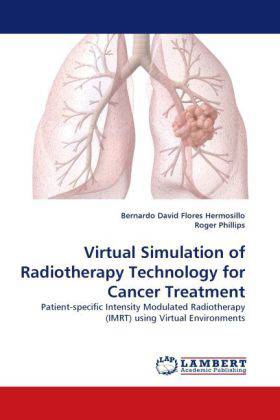
- Afhalen na 1 uur in een winkel met voorraad
- Gratis thuislevering in België vanaf € 30
- Ruim aanbod met 7 miljoen producten
- Afhalen na 1 uur in een winkel met voorraad
- Gratis thuislevering in België vanaf € 30
- Ruim aanbod met 7 miljoen producten
Zoeken
Virtual Simulation of Radiotherapy Technology for Cancer Treatment
Patient-specific Intensity Modulated Radiotherapy (IMRT) using Virtual Environments
Bernardo David Flores Hermosillo, Roger Phillips
Paperback | Engels
€ 79,45
+ 158 punten
Omschrijving
Cancer is one of the main causes of natural fatalities in the world. It is extensively treated using surgery, radiation, chemotherapy or a combination of those. Due to its success rate and non-invasiveness, perhaps the most promising of those is Radiotherapy (RT). Not yet the most widely used, the lack of training tools being possibly the main reason, followed by scarce public awareness of RT as opposed to scary chemotherapy. A Virtual Environment (VE) Simulation for Cancer Treatment intends to be a tool that will offer potential means for training radiotherapy personnel and increasing public awareness about RT as an option for cancer treatment. Designed as a hypothetical state-of-the- art Virtual RT unit containing a Linear Accelerator and Treatment Couch with an intuitive GUI for interaction. An editable random RT plan can be created including beams and settings for the Multi Leaf Collimator (MLC) and the RT Device (Clinac); the MLC can be edited at finger or jaw level. The effect of the MLC over the radiation beam is visualized. CT slices can be displayed at the isocentre, and other special effects were sketched. Core tools used were C++ & OpenGL.
Specificaties
Betrokkenen
- Auteur(s):
- Uitgeverij:
Inhoud
- Aantal bladzijden:
- 124
- Taal:
- Engels
Eigenschappen
- Productcode (EAN):
- 9783844300703
- Verschijningsdatum:
- 4/02/2011
- Uitvoering:
- Paperback
- Afmetingen:
- 150 mm x 220 mm
- Gewicht:
- 181 g

Alleen bij Standaard Boekhandel
+ 158 punten op je klantenkaart van Standaard Boekhandel
Beoordelingen
We publiceren alleen reviews die voldoen aan de voorwaarden voor reviews. Bekijk onze voorwaarden voor reviews.








